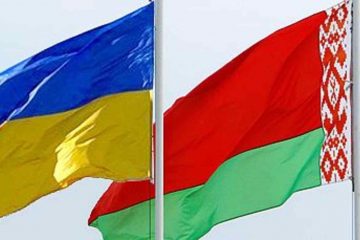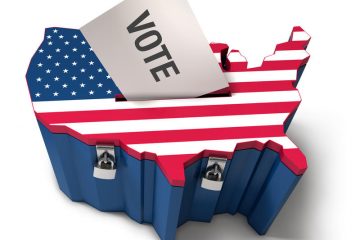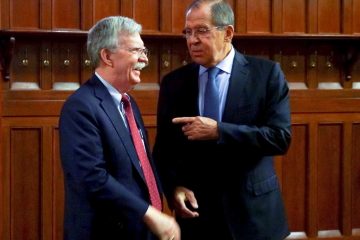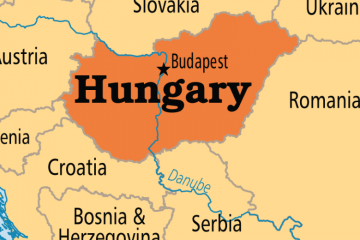The current crisis in relations between Russia and the West and the attempt to respond to it through economic sanctions illustrates how hard it is to answer a fundamental question: what does Putin really want? That, after all, is the key to predicting the Russian president’s next move, giving us the best chance of formulating a policy able to make the right concessions. Moreover, it’s the only way to hit the pressure points that will produce movement.
Karen Dawisha’s Putin’s Kleptocracy (Simon & Schuster, 2014), a meticulous exploration of the myriad economic crimes associated with Putin and his friends, allies and cronies, brings this challenge to the fore and illustrates both what can be divined from the evidence at our disposal—and what we may just be assuming.
How do we know what we think we know? Putin rarely gives interviews, and when he does, they are artfully choreographed to present him in the best or most appropriate light and to convey the message of the day. The people closest to him—and we do not even have a definitive list of those who might truly be called the inner circle—rarely speak openly about what they tell him, much less what he says to them. Two things Russia does well are message control and counter-intelligence, so both the aboveboard and underhand methods of knowing what really goes on inside the black box are severely limited in utility. And so, like Soviet-era Kremlinologists reborn, we tend to pore through what statements, gossip, visual clues and other snippets of information we can find, to piece together our best working assessment.
Back in Soviet times, though, there was at least a relatively clear and coherent ideology informing policy, as well as a clear sense of what was or was not the Party line. If you wanted a steer on Communist Party priorities, you looked at the editorials in Pravda. If you wanted to know what the military was thinking, you looked in their newspaper, Red Star. Now, though, there is much less unity of message, and even Dmitri Kiselev, the jazz-handed journalist running the state’s Rossiya Segodnya media conglomerate often seems to be interpolating, rather than transmitting, the Kremlin’s positions.
As a result, today’s Kremlinologists—myself included—suffer from two distinct but connected pathologies. The first is the dilemma of whether to focus on the wood or the trees, the big picture or the fine detail. And the second is that, without some core, objective principles and reliable evidence on which to anchor our findings, our work risks becoming some kind of Rorschach inkblot test, in which we perceive from scattered and ambiguous data only what we want or expect to see.
Putin’s Kleptocracy is a classic and in so many ways admirable case in point. Dawisha has demonstrated superhuman patience and diligence in trawling through allegation after allegation, news report after court document, claim after counter-claim. She uncovers entirely irrefutable proof that massive and institutionalized fraud and embezzlement took place in Putin’s circle. Most impressive of all, she does so largely based on open source materials: a testament to what can be accomplished with diligence, time, and a detailed, forensic approach.
What emerges is confirmation, if any were needed, that corruption is not simply a lamentable byproduct of the current authoritarian mode of rule, it is a central gear of the machine, a means of compromising and controlling yet also rewarding and socializing the elite.
But is this what Putin was after all the time? Did he have some plan to build this kind of state? This is Dawisha’s contention.
She sees Putin’s rise from KGB officer in Dresden, East Germany, through his time as St. Petersburg city council international liaison director and then all-round mayor’s bagman, straight through to the presidency, as a clear and deliberate trajectory.
How fortunate Putin would have to be to have the kind of mind to hatch such a dramatic scheme, especially when so many other leaders appear instead to be talented opportunists who, while holding to some broad long-term intent, essentially adapt to chance and circumstance. The trouble is that this kind of perspective plays to the cheap stereotype that presents Putin as a grandmaster of geopolitical chess, always a few moves ahead of his bumbling opponents.
It’s a tempting narrative, and one that draws on some classic Russian stereotypes. It’s rather difficult, though, to reconcile with the realities on the ground. In Ukraine, the neat seizure of Crimea brought domestic legitimacy at the cost of the first sanctions; the subsequent intrusion into southeastern Ukraine has mired Russia in a politically- and fiscally-expensive conflict. At home, the economic crisis is to a large extent the product of decisions Putin made in the 2000s—not being serious about diversification and infrastructure—when he chose to let the future look after itself. Even now, it is hard to see an economic recovery policy beyond crossing the Kremlin’s collective fingers and hoping the oil price recovers quickly. Putin may be a smart tactician, maybe, but not a far-sighted strategist.
Besides, Putin in the 2000s seems to have been rather different from today. To some, this is simply because he previously cloaked his true ambitions. However, there does seem to be evidence of change, even if not the kind we would like. Once, for example, he seemed to see Russia’s future in greater partnership with the West (albeit it on Russia’s terms), now he probably does believe his rhetoric about a civilizational divide and the need to protect Russian culture from pollution and homogenization.
In the 1990s, Putin was St. Petersburg mayor Anatoly Sobchak’s fixer in his dealings with local organized crime—a necessary relationship in those days when state power was at its lowest ebb. He turned a blind eye to many shady deals and, as Dawisha demonstrates, actively brokered or sanctioned many more. But how far was this simply because that is what everyone did, from the meanest local official to the masters of Moscow, none of whom did badly out of the institutionalized plunder that was the transition away from state to crony capitalism?
Dawisha suggests that because of the deep-seated and long-term desire to create the kind of Russia we see today, the story of the country’s evolution since 1991 is not one of failed democratization but the successful reconstruction of authoritarianism: a kleptocratic, pseudo-capitalist one. She is right that Putin was never a democrat in any sense we would understand. But then again, neither was Putin’s predecessor Boris Yeltsin, the man who sent tanks against his admittedly unpleasant legislature in 1993, then rewrote the constitution retrospectively to legitimize it.
Equally undoubtedly, Putin enjoys both power and a gilded lifestyle of expensive watches and sumptuous properties. Dawisha claims his personal fortune is worth $40 billion. Apart from the fact that such specific assertions rest on rather shakier evidentiary grounds, this does beg the question as to whether this was planned, or simply the inevitable side-effects of a rise through what was already such a corrupt system.
Ultimately, perhaps none of this really matters. Whatever else people have said about Putin, no one has claimed that he is a naïve innocent. If those around him are stealing from the state with impunity, indeed, if the whole system he has built rests on this, then he is guilty at the very least of permitting this to happen on his watch. His continued willingness to turn a blind eye to the misdeeds of his favorites, which gleefully seeing real or faked offences by his enemies prosecuted, certainly suggests he is more than just a spectator.
To go further, though, and claim both that this was always Putin’s intent, and also that he personally is on the take, is much harder to substantiate. It also means that we risk misunderstanding what drives him, and basing our policies on an inaccurate sense of what might entice or force him to change. Is kleptocracy really what it is all about? To Dawisha, it seems so: everything is interpreted in terms of making money or else acquiring and retaining power so as to make money. This even extends to geopolitics: the 2008 war with Georgia, for example, comes across as primarily about acquiring South Ossetia as a criminal outpost for counterfeiting operations, and the Crimean landgrab as much as anything else because of the desirable properties and economic opportunities to be found on the peninsula.
Yet there is something more visceral about Putin’s worldview. His advocacy of Russian “sovereignty”—something that for him also requires that Moscow have a Eurasian sphere of influence and is able to pick and choose the elements of the international legal order that suit it—and his outspoken defense of the distinctiveness of Russian culture are more than just gambits to play to Russian nationalist sentiment.
His emotional words about the return of Crimea to Russia, back its “native harbor” after “a long, difficult, exhausting voyage,” was not simply a scriptwriter’s artifice. Had Putin simply wanted to be safe and rich, he could have continued to work with the West. We might have tut-tutted about the corruption and embezzlement, but so long as he seemed a working partner, we would have been comfortable with him, just as we were with Yeltsin (whose inner circle, the so-called “Family,” knew a thing or two about monetizing their positions) or the earlier Putin of his first two presidential terms.
Putin is not a lunatic, nor yet a fanatic. He is a rational leader, even though his frame of rationality is not necessarily our own. His motivations, his calculus for which risks are worth taking and which goals are worth those risks is not that of the pragmatic kleptocrat, who simply looks for the safest and most efficient route to enrichment. Instead, today’s Putin is a more pure and dangerous phenomenon: a believer in a cause. Until the West can appreciate that the palaces and yachts are side-effects, rather than end goals, of this Putin, we will never know quite how to handle him.
http://qz.com/387514/kleptocrat-or-crusader-getting-inside-putins-head/





Comments